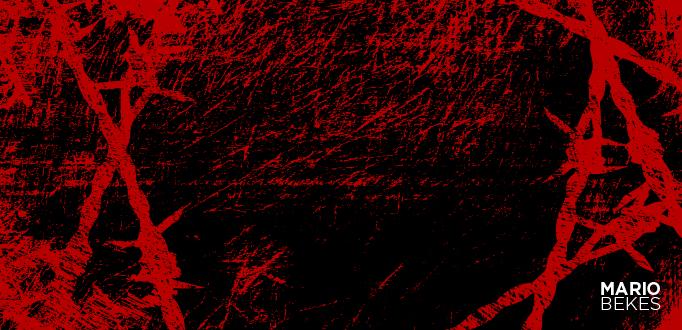The Evolution of Labor Organising and the Struggle for Workers’ Rights
The employees organised themselves, but why and how?
Trades dissolved and guild associations now replaced by trade unions because of the increase in industrial production towards the end of the 18th and beginning of the 19th centuries. In the USA, the first union regarded as the Shoemaker’s Union in Philadelphia, founded in 1794. The early unions, like guilds, are based on the association of trained employees in a particular profession.
At the same time (1799), a legislation passed in England, the home of the industrial revolution, prohibiting union formation and collective bargaining. The establishment of trade union organisations in the United Kingdom significantly slowed by the law, which, despite the amended, persisted until 1871. As a result, the General Union of Trades, which founded in Manchester in 1818 under the less contentious name of the Philanthropic Society, regarded as the first British trade union. The longest-running trade union federation in the world, the Trade Union Congress founded 50 years later, in 1868. At the time, it was known as the Trade Union Congress, and it now combines about 50 British organisations with about 5.5 million people. Only three years later, in 1871, was labor union association authorised in Britain.
The Knights of Labor, the first trade union federation in America, established in 1869. The national trade union organisation that will last today established in 1881; it has been known as the American Federation of Labor Federation of Labour since 1886, the year of the demonstration at Haymarket Square.
The General Confederation of Labor established in France in 1895, though labor unions not permitted until 1884.
In contrast to the other Western countries mentioned earlier, unionisation in Germany initiated by an already established labor party rather than the other way around. It concerns the Social Democratic Party, which established in 1869 and has endured to the present. It was the Social Democratic Party that spearheaded the establishment of the German National Trade Union Association in 1892.
In the latter half of the 1820s, non-convict laborers known as free workers in Sydney and Hobart established the first unions in Australia. Since the late 1830s, unions have grown throughout the nation. In Australia, four hundred unions founded between 1850 and 1869. Stonemasons and carpenters, as well as informal unions of craftsmen and other workers like shop assistants, laborers, and miners, represented by these early unions. These unions created in large part to support their members amid illness, loss, and unemployment. Other unions incorporated social welfare support into their advocacy activities for better pay and working conditions.
However, these early unions failed quickly. In the 1850s, union activity increased as workers fought for an eight-hour workday. Road transport employees and miners, two groups of workers outside the craft industry, also started organising.
From the 1870s on, women actively participated in the union movement, frequently founding their own unions.
A daring demand made for an eight-hour workday.
Most the 19th century’s anti-union laws logically drove labor groups’ efforts to legalise collective bargaining and trade union work to advance material rights and working conditions. It is also the time of the English Chartist movement, which fought for universal suffrage, but the eight-hour workday demand prevailed as an offensive demand in the sense of being extremely radical given the circumstances of the time.
Robert Owen, a socialist from Wales, coined the phrase “8 hours of work, 8 hours of recreation, and 8 hours of rest” in 1817, which became known as the “three eights.”
The great classical liberal philosopher John Locke made the observation that it is best to begin work as early as three years old, and this insight is still used as guidance today in Britain.
A summary of the growth of labor law in England in the first half of the 19th century is provided by Karl Marx in his seminal work Capital, which analyses the social system of capitalism.
According to Karl Marx, the prohibition on children under the age of nine years old not working within this timeframe 1833. Children aged 9 to 13 years were only allowed to labor for 8 hours, but those aged 13 to 18 years could work for 12 hours. Children under the age of thirteen years were only permitted to work for 6.5 hours starting in 1844, and it was not until 1848 that adults were allowed to work a maximum of 10 hours per day.
As an organisation of ideologically diverse labor movement groups, the International Workers’ Association, also known as the First International, established in London in 1864. This group of groups included the socialist adherents of Owen and Blanqui, Proudhon’s anarchists, German socialists, Irish and Polish nationalists, Italian republicans, communist Marx, and anarchist Bakunin.
Due to divergent opinions on the state’s role in the coming classless society, the First International suspended operations in 1876. It did not resume operations again until 1889, this time without anarchists. May 1st now suggested as the International Labor Day as a day of memory of the Chicago events during that conference in 1889, which was held in Paris.
However, what specifically occurred in Chicago in 1886?
The American Federation of Labor began a significant effort on May 1, 1886, to exert political pressure on the legislature to enact the eight-hour workday rule in those federal states where it did not yet exist. The government tried to put an end to the first round of strikes and protests. When police attempted to allow strikers to report for work at an agricultural machinery factory in Chicago, violence broke out. The following day, the anarchist unions organised a peaceful demonstration in Haymarket Square, which descended into a horrific carnage that left approximately fifteen people dead and about one hundred more injured when the unidentified assailant, dropped a bomb.
Eight famous Anarcho-syndicalists detained by the police; four of them hanged, one committed suicide while incarcerated, and three others freed following a second trial.
A full one hundred years after Owen set the precedent and approximately 30 years after the events in Haymarket Square, the demand for an eight-hour workday would not be achieved.
Differences and similarities between trade union action today and a century ago
Contrary to what one might think given the passing of time, trade union action at the time the decision to reduce the working day to 8 hours and now share more parallels. Let us list examples: pervasive precariousness, or employment insecurity in the form of fixed-term contracts and hidden self-employment, bad working conditions, unpaid overtime, inadequate legal protection, and company omnipotence.
In this regard, the history of trade union organising in the USA offers an intriguing illustration.
At the start of the 20th century, the historically powerful professional organisation began to falter in favour of industrial unions that organised workers regardless of their profession and qualifications.
In the past, trade unions established with the purpose of organising qualified workers, as their name suggests in English.
Early 20th-century unions saw unskilled workers as unfit for union protection, just as temporary workers seen as being challenging to organise.
Most unskilled workers were women and people of colour.
Due to the acrimonious nature of the battle, the American Federation of Labor split, barring unions that employed low-skilled employees from membership. The unions established the Congress of Industrial Organisations as their new administrative centre.
To address the challenges posed by the various forms of precarious employment that have become prevalent in the service industry and the private sector, we have reached a point at the start of the 21st century where there needs to be a meaningful change in the strategy of trade union work.
This leads us to the distinctions between the circumstances in the past and the present, which must unquestionably be considered if a suitable response is to be developed; today, there is neither a significant labor movement nor labor parties.
The social and economic environment has changed in a way that formalises the role of unions and places it within a framework where any form of politicisation is either undesirable or simply not present.
The nature of work has changed significantly; whereas once employees were employed by large corporations and shared a common workspace, today a large percentage do not share a workspace and do not know each other; instead, they frequently work from home, online, or through one of the platforms, which greatly reduces the likelihood that they will connect and engage in conflict.
Equally as much as they did in the 19th century, workers still require a union.
Now the trade union was founded, it was obvious that no one would give away political and economic rights; rather, they would have to be fought for, and the success of the fight would depend on the size and power of the workers’ organisations.
This has been amply demonstrated by the 100-year war for eight-hour workdays and the even longer struggle for universal suffrage.
But as time went on, the chosen rights started to be associated less and less with pressure and struggle and increasingly with knowledge, advancement, and reason.
This, in this interpretation, led to the development of ideas about the necessity of extending the rights to a larger population. A large part of this understanding made possible by the welfare state in Europe during the so-called “30 golden years” that followed World War II.
We will only briefly touch on the significance of the Western welfare state, i.e., the rights enjoyed workers in the West meant the existence of the Soviet Union and the socialist bloc to which we belonged until the end of the 1980s, without delving into the larger issue of dismantling the Western welfare state, which especially intensified after Margaret Thatcher came to power in Britain in 1979 and Ronald Reagan in the USA in 1981.
As Eastern challenges fade away, social services were privatised, labor rights are becoming more flexible, and the economy’s structure shifts in favour of low-paying positions in the service industry.
The worst are young people, women, and persons with little education, especially if they work in the private sector. The percentage of fixed-term contracts is rising, the unemployment rate is rising, and there are fewer high-paying positions available. Due to the union’s diminished strength because of all these developments, which leave it ill-equipped to adapt to the new conditions, it all but vanishes from the private sector.
Most people have come to the view that the trade union is an excessively strong type of worker organisation that, while it might have been able to protect workers’ rights 50 or 100 years ago, is now helpless in the current environment. Such logic is flawed because it fails to distinguish between the trade union as a labor organisation and the tactics it employs to build its membership and pursue its objectives.
In other words, it was the ideological content that needed to be changed rather than the trade union as a form that was the problem.
The best evidence for this comes from recent victories in organising platform workers across Europe, which show that the issues can be fixed and that there is a chance for a successful campaign to improve working conditions and increase workplace safety. For instance, allowing those who are unemployed or just temporarily working to join a union would make it much easier for precarious workers to organise as they would be able to do so regardless of their ambiguous current employment situation.
Equalising the rights of temporary and permanent employees and regulating labor relations in specific businesses or industries through collective agreements are two other examples.
There is still room for adaptation, including a stronger physical presence, adaptation of organisational techniques to the specifics of workplaces, increased decentralisation, worker empowerment as the face of union activities, increased transparency and worker communication, adaptation to modern communication formats, and a new strategy for collecting and using membership dues.
The work of trade unions is fraught with difficulties, but it is unlikely that things will improve without the concerted efforts of all the workers. As a result, the theory that trade unions are superior in the twenty-first century is, at best, naive and, at worst, a hoax intended to divert attention from the factual issues at hand.
The union needs a fresh concept to inspire the workers.
The labor movement’s history has shown us that, in addition to sound organisation, it was critical to have a concept that inspired participation, mobilised supporters, and inspired hope for a better future.
A notion that, like the radical demand for eight-hour workdays, seems too radical to be true but still starts a struggle and inspires.
The current fight for the protection of material rights is admirable, but the question is? How far can it go without a fresh, creative idea? What would it look like to fight for the socialisation of the means of production or the shortening of the working day in the present day?









